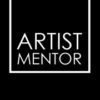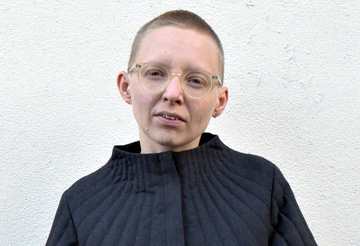Senior Content Designer: ROSIE WANEK
Ceri Hand Content Designer, Curator, Interviews
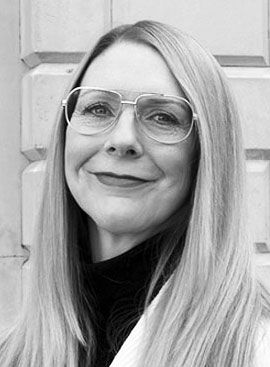
I had the pleasure of working closely with Rosie Wanek at Somerset House, London. Rosie was Head of Exhibitions Management and together we worked on an ambitious programme, delivering large and mid-scale ticketed and free exhibitions, installations, and events, across the whole site.
Rosie is blessed with being a curious, surprising, compassionate creative, able to combine eclectic research and original thinking with meticulous project management (I am still in awe of her Excel skills!). She makes fascinating connections between incongruous objects and subjects, highlighting the themes and details the rest of us miss, in a subtle yet compelling way.
She is an honest, caring, and considerate leader, empowering those she works with, always running a calm and steady ship, even in turbulent creative storms. I learned so much from her and would happily jump on board, wherever she steered the bow, in still or choppy waters. She is also patient and determined enough to whizz up the most amazing, desirable clothes in her scant down time.
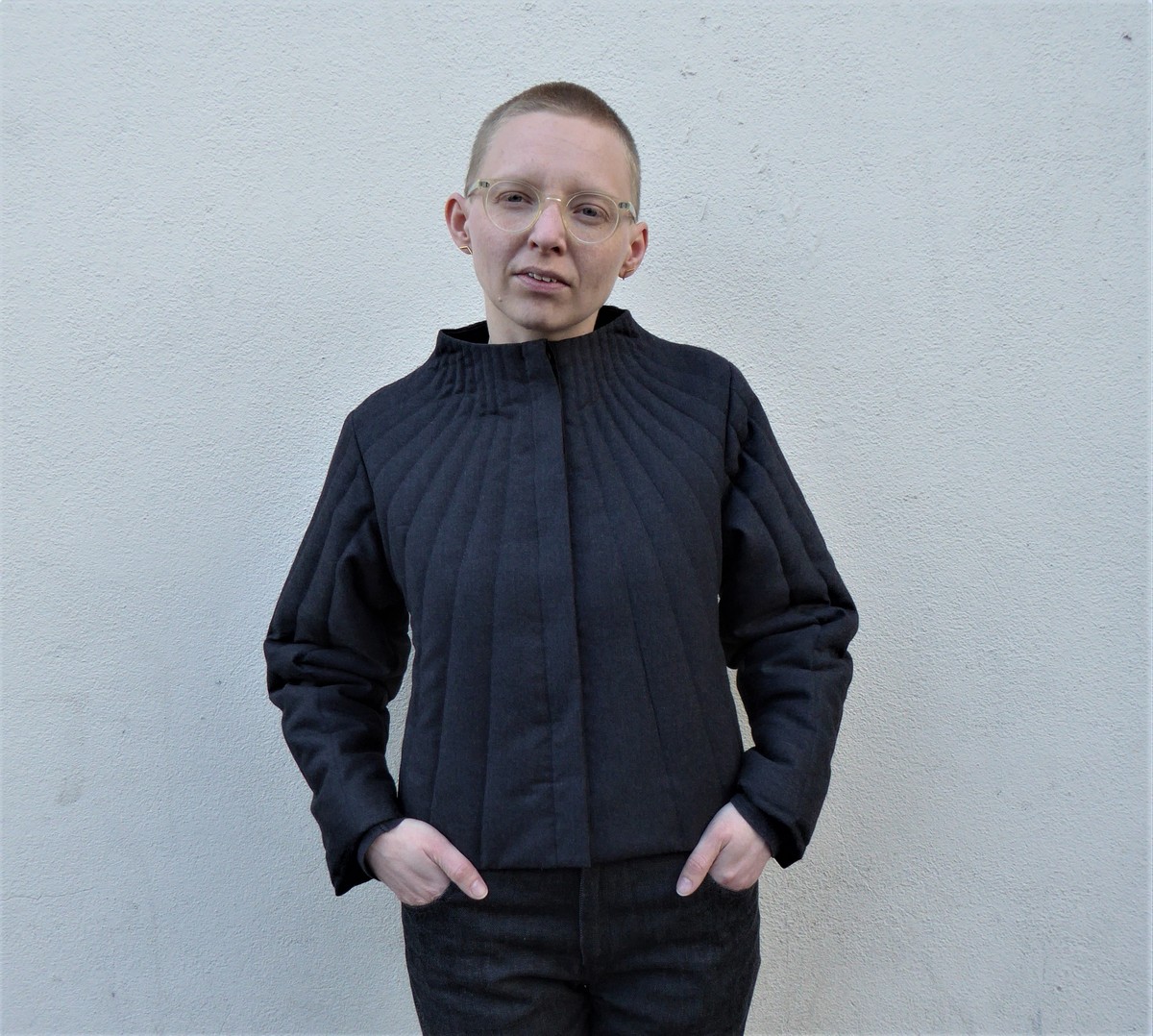 Rosie Wanek, Photo Jonathan Powell
Rosie Wanek, Photo Jonathan Powell
Rosie is a Senior Content Designer at Event Communications where she leads on the content design and interpretation of new visitor experiences for culture and tourism projects around the world. Rosie is driven by an interest in using stories and media to connect people which she has brought to her work as a freelance curator and trainer. Previously Rosie worked at the V&A and Somerset House, leading on the development and delivery of exhibitions programmes diverse in scale and content within the UK and internationally.
What are you doing, reading, watching or listening to now that is helping you to stay positive?
Making things and reading things keep me afloat outside work - one offers a direct connection between creativity, materiality and the bodily, the other provides an imaginative space for reflection on our humanness - these are things I really value. Cutting out monthly international travel and commuting has really helped me give more time to these things and find a bit more balance in my life which has been welcome.
I’ve been designing and making most of my own clothes since I was a teenager - I love the combination of authoring my appearance, how I feel physically and the practical challenges of working with materials (I am a super-tactile person - sometimes I think I was drawn to working in museums because it means I can legitimately touch the objects - with gloves on of course!). Recently I have been developing a series of ‘dumpling’ (read quilted) garments to stay warm and smart whilst working from home. I’ve also started to make my own bras which is a whole new exciting journey.
Designing and cutting patterns demands all my concentration but when I am making up a garment I listen to podcasts - I am particularly drawn to things which connect intimate personal stories to our wider social context. Two favourites are 99% Invisible and Earhustle. I am also particularly excited about a new discovery Kerning cultures which shares a wide range of stories from the Arab world.
As much as I have really appreciated less travel in some respects, I really miss the excitement of going to new places and especially eating new foods. So, I have been researching and cooking (and messing up) tasty new things from Japan, Mexico, India and elsewhere - we are so lucky in London to be able to get so many ingredients. I’ve also always read lots of fiction in translation from around the world and I’ve really missed hunting for new things to read in a real bookshop (ideally Foyles on Charing Cross Road where the staff picks are the best!) - I especially enjoyed Breasts and Eggs by Mieko Kawakami, Dark Satellites by Clemens Meyer and lots of travel writing from Eland Books.
And lastly there is nothing more joyful - or good for clearing the mind - than swimming in the lido on my back looking at the sky, so I have been doing that as much as I can.
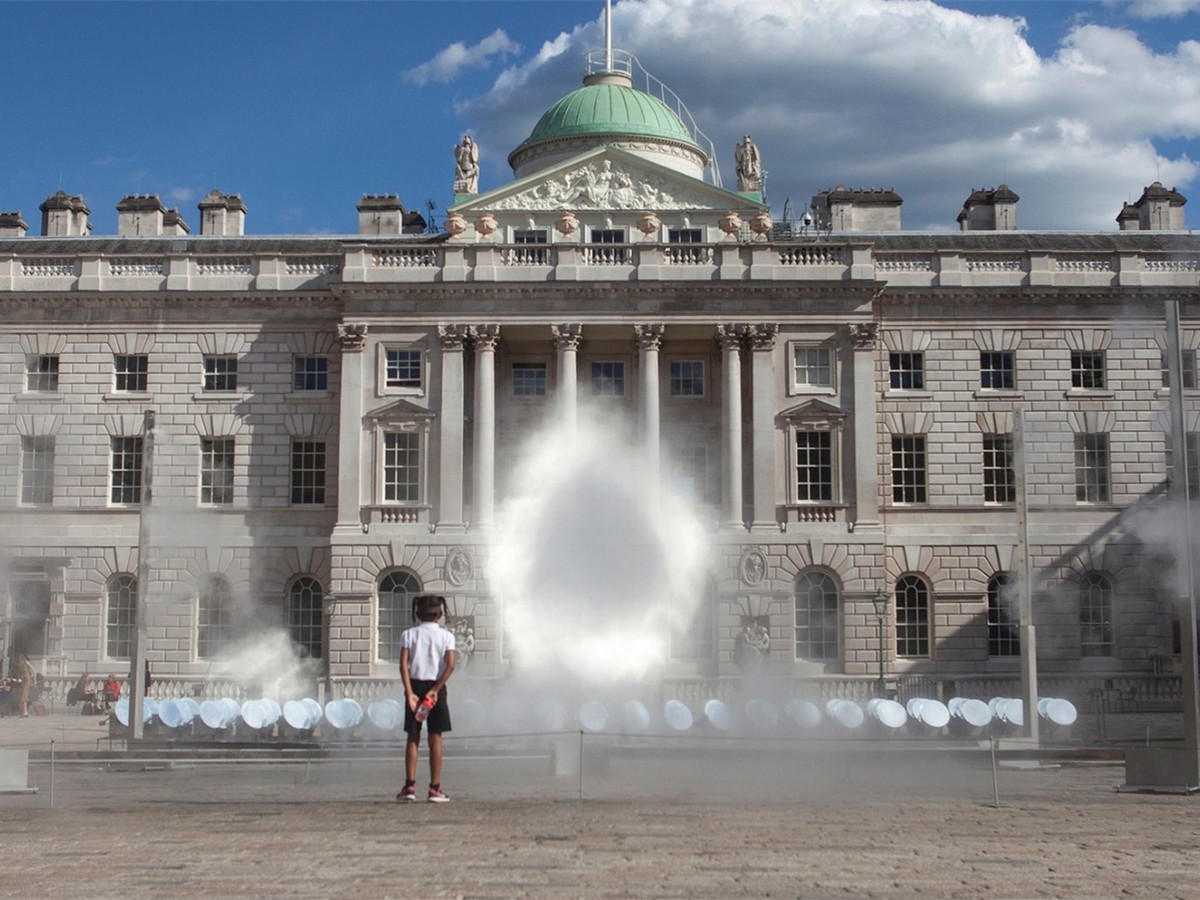 Kimchi and Chips, Halo, The Edmond J. Safra Fountain Court, Somerset House, London, Photo Somerset House Trust
Kimchi and Chips, Halo, The Edmond J. Safra Fountain Court, Somerset House, London, Photo Somerset House Trust
What are you working on right now?
So, I can’t say exactly because the project is under an NDA, but…I can say that I am working for Event Communications on the redevelopment of a museum about the history of a place in Asia. I am leading on the content design/interpretation for the visitor experience. It has me thinking a lot of about the politics of history writing, and the power of design to shape how we think about the past and present.
Over the years I have found that having a few side projects outside of my main occupation really helps me retain perspective on my own work and the sector more broadly, it can be so easy to get lost in the vastness and million details of big projects. So currently I am mentoring a fashion design duo who are developing their practice and preparing for an initial presentation of their work in progress at a gallery in the Netherlands. Accompanying them on their journey as they think through their design philosophy, shape their practice, and start to look at how this might express itself publicly in an exhibition format is so exciting and inspiring.
What are your core values and drivers that you bring to your work? What do you care about?
I suppose at the bottom of it all I believe that arts and culture are key for creating more generosity between one another, a sense of connection and investment in the success of others - and where possible empathy. It’s a place where we can look beyond the things that might appear to divide us and inspire us to think and make in new more generous ways.
I believe this lies as much in how the arts is organised and run as the content created. Everything we do creates ripples of meaning with real life consequences which we are responsible for, so I value things that are really considered and critically thought through, processes as much as content. The result of the project is important, but the experience of working on it also hugely meaningful - this is particularly true when you are touring exhibitions internationally where you are to a degree an ambassador for the institution, culture, and country you are representing. As part of that, respecting your audience and working partners is paramount - respect that they are choosing to spend their time/money with you, respect the variety of their motivations for being present. I aspire to this informing every aspect of my decision making, we are there for them.
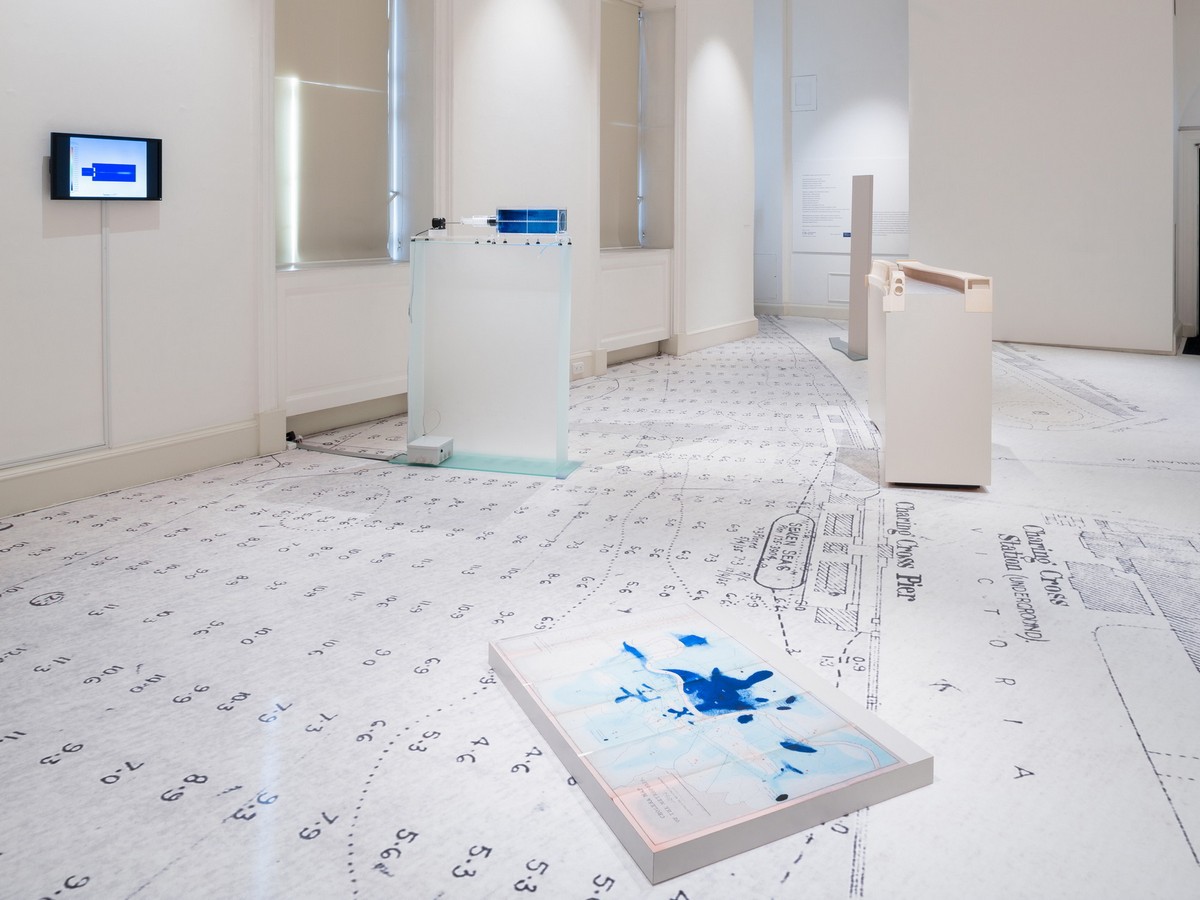 Eloise Hawser, Ring Vortex Imaging Phantom, 2018, Medical imaging phantom, glass and steel plinth, Phantom on loan from Sheffield University and Leeds Test Objects,
Eloise Hawser, Ring Vortex Imaging Phantom, 2018, Medical imaging phantom, glass and steel plinth, Phantom on loan from Sheffield University and Leeds Test Objects,
Part of the Charles Russell Speechlys Terrace Room Series, Terrace Rooms, Somerset House, London, Photo Tim Bowditch
How has this last year affected your ideas of what you want your contribution to be in future?
There is so much about how we behave to one another that is harmful for ourselves and the planet that has long troubled me deeply - this year has seen some of these ongoing issues express themselves in specific events attracting wider attention.
For a while, my focus was within the gallery/museum walls, wrangling with how to make the best use of the exhibition medium to create stories all could enjoy - but in the past five years what has come to trouble me more is the role arts organisations/museums have in shaping society itself - these are not the benign entities they try to present themselves as.
Working closely with international teams and particularly spending time in India with my partners’ family over the past ten years has provided a strong contrast to the context in which I grew up in terms of how knowledge (and culture) is created/perpetuated and presented.
This winter I was reading Julian Baggini’s How the World Thinks: A Global History of Philosophy and thinking particularly about the implications for our diverse society of the fact that museums are the expression of a type of knowledge construction specific to philosophy underpinning western culture.
This aspect of museums is one of the factors limiting the range of perspectives and experiences expressed in mainstream culture.
In master-planning-thought-experiment-mode I’ve been asking myself: What might spaces where knowledge and culture are created and shared look like if they took as their foundational starting point different and/or a mixed senses of how knowledge (and culture) is created/perpetuated/presented? And what might this mean for the shape of society? I get that this sounds all a bit academic, but I believe it's important to really dig deep and challenge the foundations of what we do if we want to create real change.
Oh, and in terms of working practices there are all the Zoom calls too! - and, sure, it is fantastic how much you can get done on Zoom, but I strongly believe quality time spent face to face with your collaborators remains incredibly important for building and maintaining strong trusting relationships. I am a very ‘in real life’ kinda person. Not least I suppose because I think we are embodied humans and there is nothing like experiencing our embodiment together for cultivating connection, generosity, and respectful behaviour to one another.
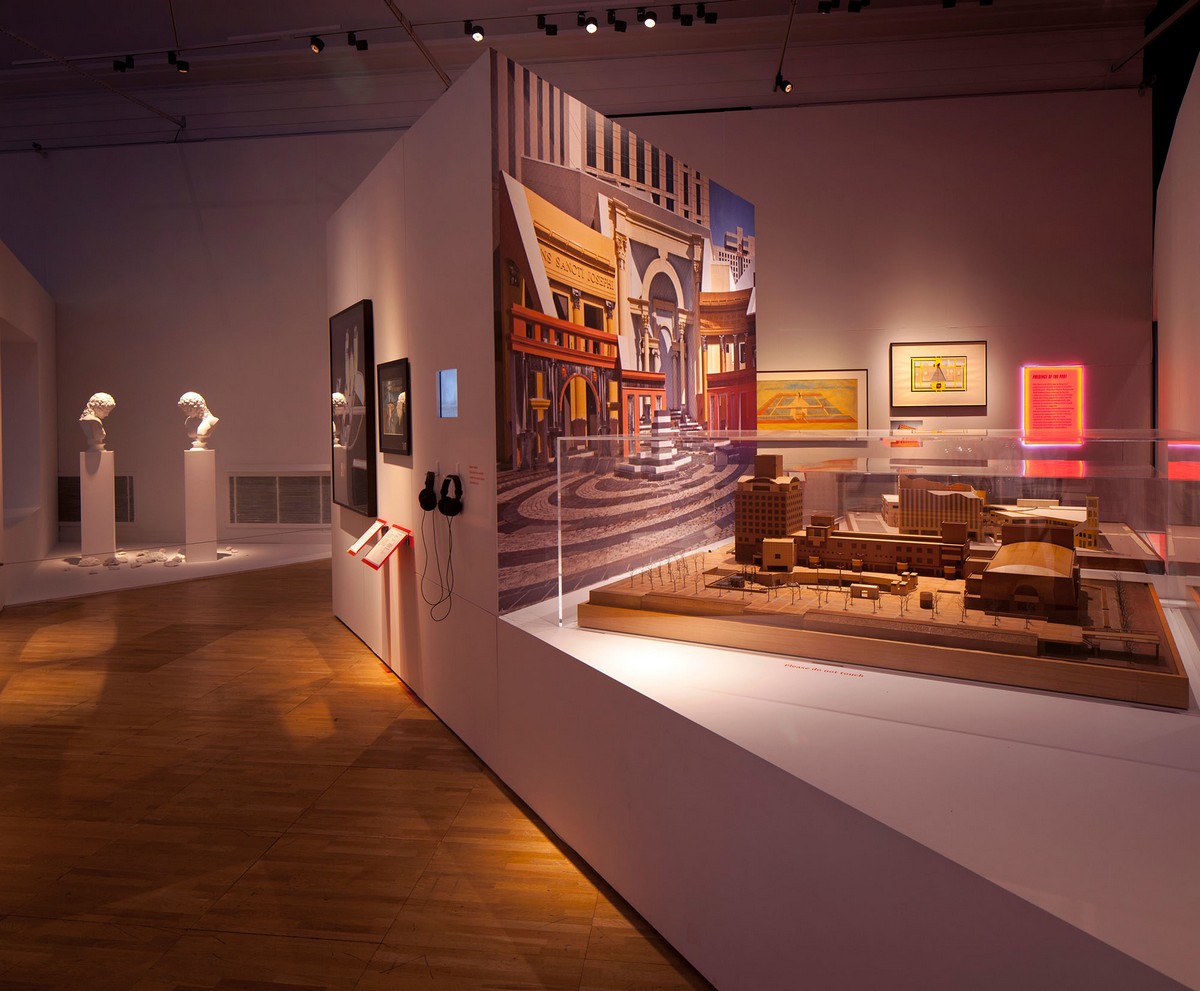
Post Modernism, V&A, 2011, Photo Carmody Groarke
What do you think should change in the way arts organisations operate?
Oh, so many things! The arts are facing some of the biggest funding cuts and I think arts organisations really need to come together as a sector (linking up with Higher Education) and work on presenting their value to society (including the economy) in a way that is compelling to the government to secure funding - we are storytellers, we should be able to do this better!
I wish we could break down/rework some of the entrenched production methods that divide sectors within (and beyond) the arts and make creating interdisciplinary experiences difficult.
The gulf between what arts organisations say they want to do for their audiences and what they achieve is often vast. Arts organisations are still far from being fully inclusive and representative either in staff or the stories told. I think in part this is a legacy from the biases of our deficient education system and arts organisations should be doing everything they can to reach out and counter this - making as many people as possible, from as young as possible, feel that their organisation is a place where they can be vital contributors.
What opportunities does the advancement of technology provide for both exhibition making and engaging audiences?
New communications technologies have been great for bringing people together in many ways - from supporting international collaborations without travel that is expensive and costly to the planet, having dialogue with potential audiences and creating and sharing new forms of content.
They offer new ways to gather and tell stories - untethered from objects and artefacts - which is exciting because there are so many people everywhere for whom important aspects of culture are not best expressed through the object-based epistemology that traditional western museums are based on.
However, I think it is super important that arts organisations approach these, and other new technologies, with caution. Especially with the full awareness that they are not innocent/benevolent tools that serve only the purpose of the user but are highly politicised and fundamentally alter the meaning of the content we load into them.
When I was at university, I came across the writings of Marshall McLuhan, who was not fashionable at all at the time, but really shaped my thinking. With the rise of social media his ideas have seen a renaissance in the last years - his frequently quoted phrase ‘the medium is the message’ has never been more important.
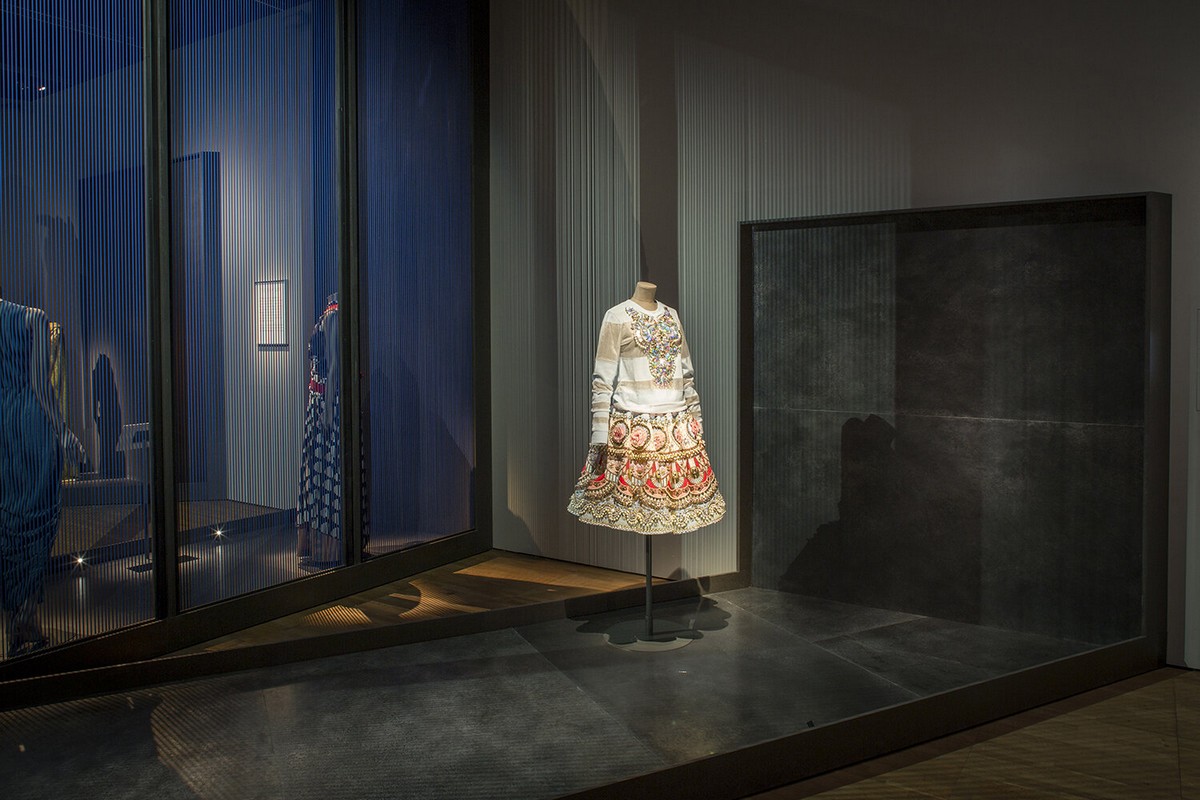
The Fabric of India, 2015, V&A Photo Gitta Gschwendtner
What do you want your contribution to be in future?
Hmm, this is a bit of a work in progress currently (see above!). On a day-to-day basis I hope that I always bring a useful mix of creativity, imagination, humanity, and practicality to all the projects I work on.
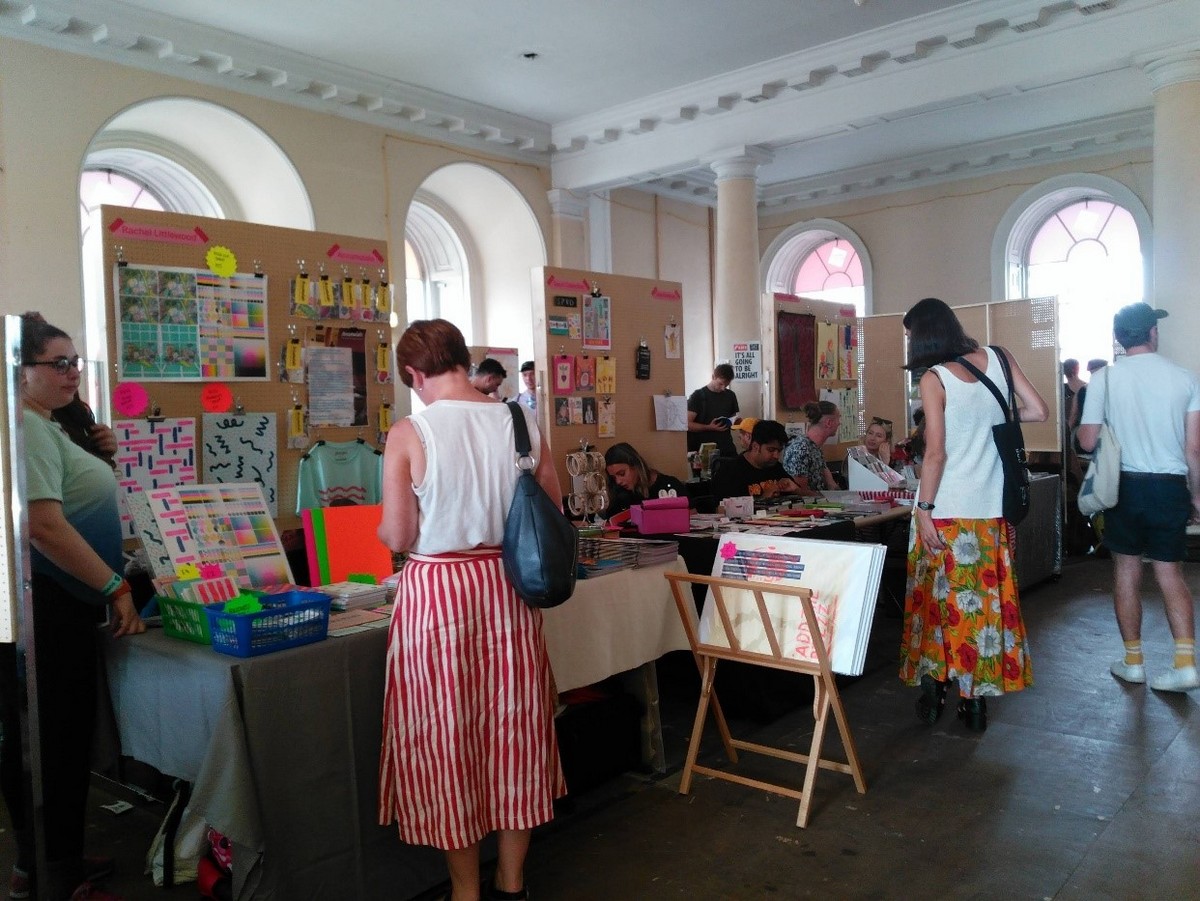 Process, Part of Print! Tearing It Up, 2018, River Rooms & Lancaster Rooms, Somerset House, London, Photo Rosie Wanek
Process, Part of Print! Tearing It Up, 2018, River Rooms & Lancaster Rooms, Somerset House, London, Photo Rosie Wanek
Do you have a favourite exhibition/project/event that you have curated and if so, what makes it particularly special to you?
Not really, there are lots of projects I loved for different reasons. Interestingly it is not the biggest or most high profile that make it to this list...
- Process - was a zine festival Somerset House presented with fantastic Somerset House Studios residents OOMK! - this was a delight of a project on a shoestring budget. Walking around the festival you could see zine makers and visitors alike were having a wonderful time connecting over a shared passion. It was really refreshing as I’ve worked on a lot of very large projects where you don’t get much immediate contact with the audience.
- Fabric of India - I really enjoyed working with the curators to draw out makers stories and processes, especially researching and setting up filming with some fantastic artisans in India - we produced the most viewed digital content the V&A had created to date.
- Tour of Masterpieces of World Ceramics - I toured this show to three comparatively small venues in Germany, Syria and Turkey. The exhibition clearly meant a lot of each of the venues, it was the jewel in their programme for that year and I loved working with those teams, building connections as we overcame the many many challenges we faced together.
You’ve been involved in creating and managing multiple touring exhibitions – what are your top 3 key learnings?
So, in this order...
1. Get the best understanding you can of the culture you are working with - both the broader culture of the place, and the culture of the institution - and use this to build strong relationships. The more you know about ways of working, how decisions are made and by who, taboo topics or ways of expressing things, what will open conversations, what will close them down, the easier it will be to collaborate happily and productively avoiding/overcoming the inevitable challenges smoothly.
2. Try to understand what the value of the exhibition is to the host venue, and their audience. What is the institutional narrative around this exhibition? Why did they (really) choose to host it? What role does it play in their programme? How does it contribute to constructing/maintaining their brand? The answers to these questions are often not immediately evident but can be very helpful for enabling the venue to achieve their goals and understanding why they might at times want different things to you.
3. Embrace the contract (or its equivalent). Sure, it often isn’t fun, but think of negotiating the contract as an opportunity to find out what you really both want and work through differences of agenda in a comparatively safe space - before you are under real pressure trying to install the exhibition/print the catalogue/manufacture the merchandise. That said, be very conscious of point 1 and 2 when you do approach this…you might need to take a slightly different approach, either way it is worth having those types of conversation early on to avoid bigger challenges later.
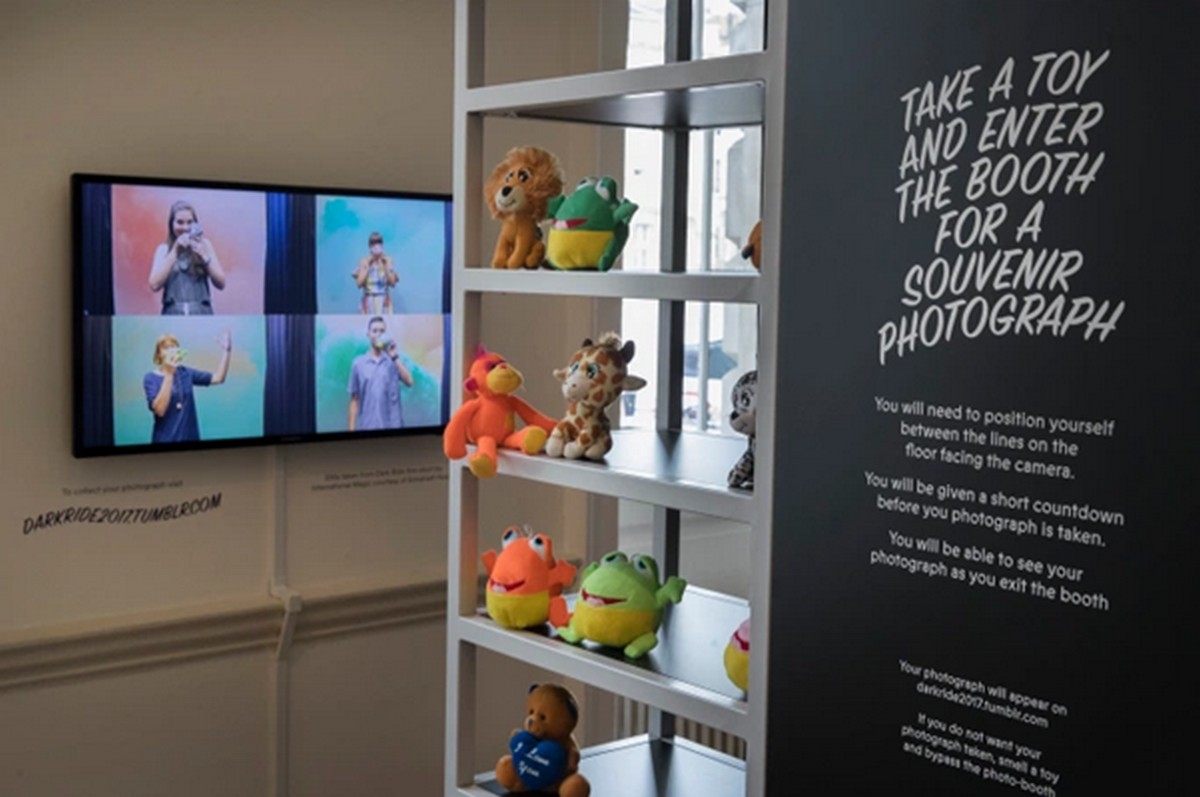 Perfume, A Sensory Journey Through Contemporary Scent, 2017, (Installation view), Somerset House, London, Photo c/o Somerset House Trust
Perfume, A Sensory Journey Through Contemporary Scent, 2017, (Installation view), Somerset House, London, Photo c/o Somerset House Trust
What risks have you taken in your career that perhaps did not go so well but you learnt the most from?
Touring exhibitions internationally, especially to political unstable parts of the world, is never without risk - some risks bigger and more real than others. I have had a few nervous moments witnessing hair raising things in my time that proved useful lessons (no I will not say more on that!).
On a more personal note, though, a few years ago I left a full-time job overseeing the development and delivery of an arts programme to take a short-term curatorial contract. This felt terrifying, not least because I was wracked with imposter syndrome, but without that leap though I would not be doing the more content focused work I do now.
What helpful resources would you recommend to artists?
Resources - tricky, I think though that there are inner resources that artists can draw on to help. The imbalance of scale between an artist studio and a large arts organisation poses huge challenges for both sides - they are subject to such different demands and restrictions. Trying to understand where your collaborators are coming from and staying professional - on both sides - will really help get the best results for all. I think that the tips above relating to touring exhibitions can also be usefully translated to artists working with institutions/arts organisations.
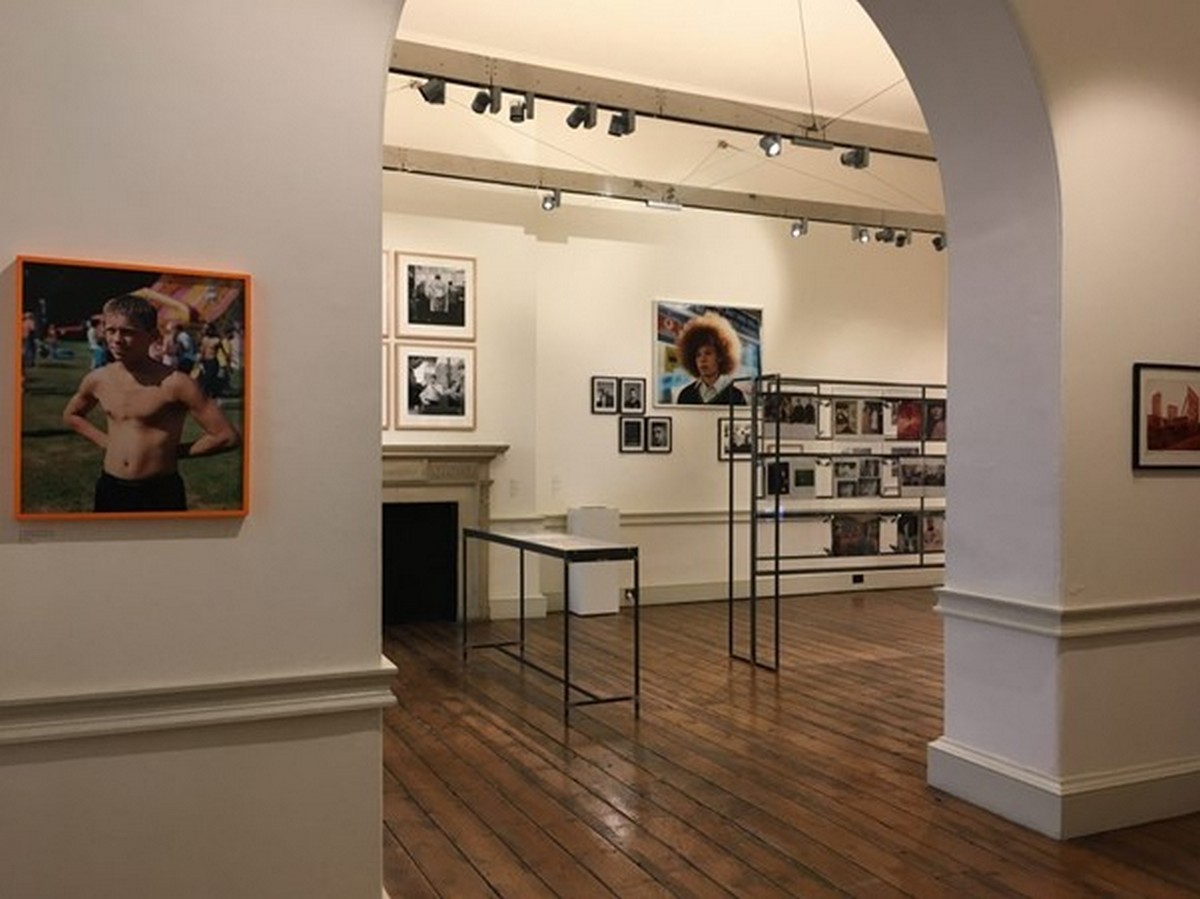 North: Fashioning Identity, 2018, East Wing Galleries, Somerset House, London, Photo courtesy Somerset House Trust
North: Fashioning Identity, 2018, East Wing Galleries, Somerset House, London, Photo courtesy Somerset House Trust
Do you have any advice for people wanting to work in the arts?
The arts are varied, offering a wide range of working environments and jobs, try to get some insider knowledge to work out where you might be able to contribute best and be happiest. And remember job titles only mean so much look at what the job involves and go by that.
Don’t be disparaged if you don’t feel you belong - keep going, be bold and say what you think (strategically). I very much felt out of place, particularly at the start, but what made me different is also what has given me some of my most valuable successes.
Seek out mentor figures - I can’t overstate the value of having more experienced allies to reflect on your work with, give you a nudge or a boost of confidence where you need it, or suggest avenues you might never have thought of.
‘Keep your eyes on the prize’ - this is totally a Ceri quote - but it is the perfect expression of how important it is to be clear about what you are trying to achieve, and what are the priorities. Be ready to let the things/processes go that just aren’t that important to secure the things that really matter - this is also a great tip for touring exhibitions and collaborations between arts organisations and artists.
Make sure to document the projects you work on (in whatever capacity that may be) so you can use those images later in your career and reflect what you have done.
Follow Rosie on Instagram @greyrosiew @event_comm and visit https://eventcomm.com/
Please share this interview
And do feel free to email or contact us via socials @cerihand
